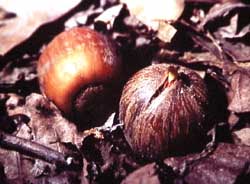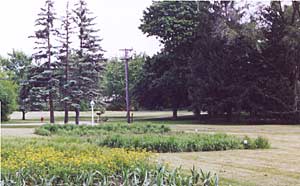NATIVE ECOSYSTEM RESTORATION
History of the Restoration Site
Role of Buffer Sites in Preserving Biodiversity
Project Goals and Purpose
Restoration Strategy and Methods
Site Biodiversity
Education and Outreach
--Field Resources
--Site Value
Project Participants
|
Site Value In Illinois, 99.9% of our original prairies have been destroyed through agricultural practices and urban development. Over 90% of Illinois wetlands have been filled or drained. The Illinois oak and hickory savanna is one of the rarest ecosystems in the world and is ranked G1 -- critically globally imperiled -- in greater danger than the rainforests of the world. Recovery of natural areas and restoration of degraded landscapes offers the only hope to halt and reverse the loss of biodiversity and ancient terrains. If future generations are to experience and enjoy our prairies, savannas, wetlands and woodlands -- if wildlife and native gene pools are to survive -- we need to act now to preserve them. 
photo by Tim Burke Many landowners are exploring landscaping with native plants as an alternative to mowed turf grass and non-native beddings. They are aware that these commercialized practices are water intensive and dependent on pesticides, herbicides and fungicides and also require chemical fertilizers. This increases surface runoff and pollutes groundwater and waterways. 
photo by Susan Van Horn The restoration on 10 Hickory Lane offers a demonstration project which features the values and beauty of natural landscaping. The benefits of using native plants include improvements in flood control, water quality, wildlife habitat and quality of life. |